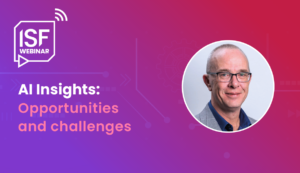The Risks And Rewards Of AI: Strategies For Mitigation And Containment
Artificial intelligence is on the agenda in virtually every boardroom and will no doubt revolutionize the way people work and businesses operate. But what major risks does this nascent technology propose today and for the future? And how do we address and mitigate these threats?
Cyberattacks At Industrial Scale
As AI adoption becomes more widespread, I expect we will witness the industrialization of tailored, high-volume, high-impact cyberattacks involving malicious use of AI that will leave many businesses overwhelmed and unable to operate effectively. At this point, threat actors might also become more industrialized, moving away from lone-wolf adversaries to more sophisticated and organized cybercrime syndicates that receive nation-state sponsorship and all the protections they entail.
Poisoning The Data Well
As companies strengthen their technical mitigations against traditional forms of cyberattacks, I believe threat actors will shift their attention toward illicit data manipulation. As a result, adversarial actions may become more obscure and harder to detect. The accuracy and credibility of workforce-related data, which companies increasingly depend upon, could be compromised. Manipulation of AI models, whether in the realm of software code or the information that is being stored or processed, remains a major concern.
The Need For Balance In AI Reliance
AI has delivered on breakthrough use cases, particularly in areas that involve speed, efficiency, repetition, consistency, continuous availability and scalability. To cite an example, marine scientists are using AI and deep machine learning (ML) to interpret the language shared among sperm whale populations via the detection of echolocation clicks. On a more practical business level, AI can improve staff productivity in tasks such as classifying, summarizing and responding to queries, and it can help forecast financials, analyze budget variances and summarize trends and insights.
However, in complex decision-making, there will always be a need for human-inspired creativity, for emotional intelligence and for humanity. AI and ML alone cannot deliver on those human-borne characteristics. This is where I believe organizations must draw a line to avoid confronting the risks of being too over-reliant on AI.
How Boardrooms Can Mitigate AI Risks
While I believe we as business and cybersecurity leaders should acknowledge the inevitability of AI advancements and security risks, it’s also important to learn how to make smart use of this technology in a secure and responsible way. Here are four strategies to consider.


